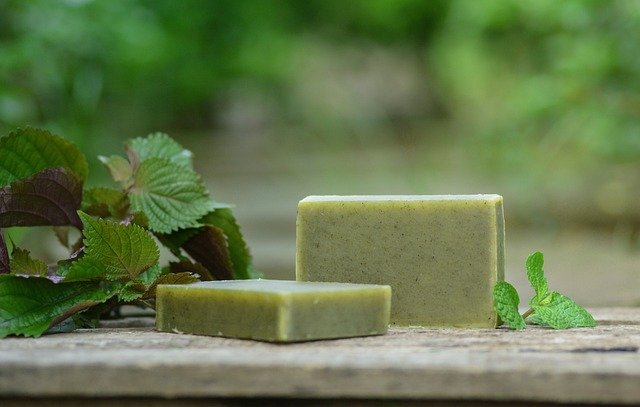Have you ever wondered why soap works so well when plain water doesn’t? You can rinse your hands with water all day, but the grease, dirt, and germs often stay put. Add a little soap, though, and suddenly everything washes away. It feels like magic, but it’s really chemistry.
Soap is more than just bubbles and nice smells. Each drop is a tiny chemical tool designed to grab onto dirt and germs and lift them off your skin. It doesn’t just clean—it breaks down oils, removes stubborn particles, and even destroys the outer walls of harmful microbes. Without it, staying clean and healthy would be much harder.
In this article, we’ll break down exactly how soap works, why it’s different from just using water, and what makes it powerful against both dirt and germs. We’ll keep it simple, with real-life examples, so you’ll never look at a bar of soap the same way again.
Why Water Alone Cannot Clean Everything
When you spill juice on the table or splash mud on your hands, water usually helps wash it away. But if you’ve ever tried cleaning up oily food, sticky butter, or greasy stains with just water, you know it doesn’t work well. The grease stays behind no matter how much you rinse. Why is that?
The answer lies in the chemistry of water. Water molecules love to stick to each other because of something called polarity. They act like friends holding hands tightly. This is why water drops form beads on a surface instead of spreading everywhere.
But grease and oils are different. They are non-polar, which means water doesn’t mix with them. Instead, water pulls away from oils, leaving them clinging to your skin or dishes. This is why rinsing your hands with plain water leaves them feeling sticky after eating something oily—water just can’t grab onto grease.
The Problem with Germs
Now let’s think about germs. Many harmful microbes, including viruses and bacteria, have a protective outer layer made of fat-like molecules. Just like cooking oil, this fatty coating doesn’t mix with water. So when you try to rinse germs away with water alone, many of them stay stuck to your skin.
That’s why washing your hands with plain water isn’t enough. You might remove a little dust or dirt, but the grease and germs won’t budge. Something more powerful is needed—and that’s where soap comes in.
How Soap Makes the Difference
Soap is like a clever chemical bridge. It can connect with both water and oil at the same time. This is what makes it so effective at cleaning.
Each soap molecule has two parts:
- One end loves water (hydrophilic).
- The other end loves oil and grease (hydrophobic).
When you rub soap on your hands or dishes, the oil-loving end grabs onto the grease or germ coating, while the water-loving end sticks out. When you rinse with water, the soap molecules pull the grease and germs away, trapping them in tiny bubbles called micelles. Then the water simply washes them down the drain.
So instead of water and oil fighting each other, soap brings them together in a way that allows cleaning to happen.
What Soap Is Made Of
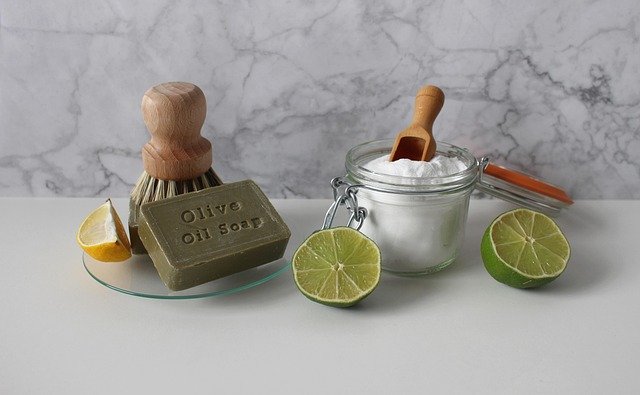
Soap may look simple—a bar, some bubbles, maybe a nice smell—but its chemistry is fascinating. At its core, soap is made from two things: fats or oils and a strong base like lye (sodium hydroxide or potassium hydroxide). When these are combined in a special process, they react to form soap.
This reaction is called saponification. That’s a big word, but here’s the simple idea: the fat molecules break apart and combine with the base, creating soap molecules and glycerin. Every soap molecule ends up with two ends—one that loves water and one that loves oil. That’s the secret of its cleaning power.
A Little History of Soap
Soap has been around for thousands of years. Ancient people discovered it almost by accident. Historians believe that when animal fats from cooking mixed with ashes from fires, they created an early form of soap. People noticed that this mixture helped wash clothes and skin more effectively than water alone.
The Romans used soap for bathing, and in the Middle Ages, soap-making became an important craft. Over time, recipes improved, scents were added, and today we have a wide range of soaps—from solid bars to liquid hand soaps to body washes.
Even with all the variety, the basic chemistry hasn’t changed. It’s still about creating those special molecules that can pull grease and germs off surfaces and skin.
Why Soap Is So Powerful
Let’s imagine what happens when you wash your hands with soap. As you rub your hands together, the soap molecules surround particles of dirt and oil. They form little round structures called micelles.
- Inside the micelle, the oil-loving ends point inward, trapping grease and germs.
- Outside, the water-loving ends point outward, allowing the micelle to mix with water.
When you rinse your hands, the micelles are washed away, carrying the dirt and germs with them. It’s like soap creates tiny cages that trap unwanted substances so water can carry them away.
This is why doctors and health experts recommend washing hands with soap for at least 20 seconds. That’s enough time for the soap to surround germs and lift them off your skin. Without enough time, some germs may remain.
Soap’s power comes from its dual nature. It’s not just about bubbles or foam. Each molecule is a little chemical worker, grabbing onto oils and germs on one end while pulling them into water with the other. That’s what makes it so much stronger than rinsing with water alone.
How Soap Destroys Germs
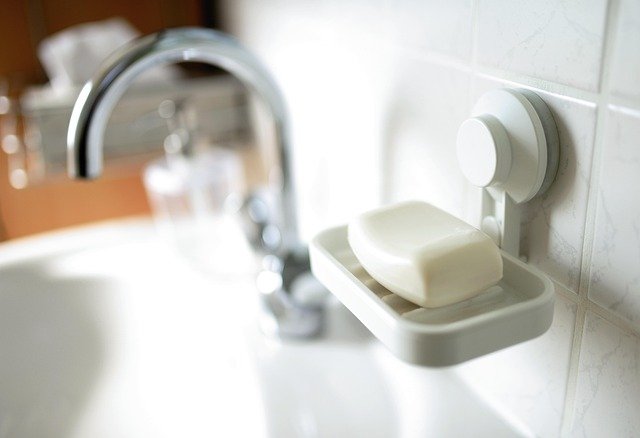
When we think of soap, most people imagine it just washing germs away. That’s true—but soap goes even further. It doesn’t just trap dirt and oil, it actually breaks apart germs and makes them harmless.
Soap vs. Viruses
Many dangerous viruses, like the flu or COVID-19, are wrapped in a fatty outer layer called an envelope. This envelope helps protect the virus and allows it to stick to your skin.
But remember: soap has one end that loves oil and fat. When you wash with soap, the fat-loving end of the soap molecule attacks the fatty envelope of the virus. It tears it apart, breaking the virus into pieces. Without its protective layer, the virus can’t survive.
That’s why health experts stress the importance of washing your hands for at least 20 seconds. This gives the soap enough time to break open viral envelopes and trap the pieces inside micelles, which are then rinsed away with water.
Soap vs. Bacteria
Bacteria come in many shapes and sizes. Some have tough outer walls, while others have fatty membranes similar to viruses. Soap can damage these membranes too, making it harder for bacteria to stay alive.
Even if soap doesn’t completely destroy a bacterium, it can still lift it off your skin and carry it away in micelles. So whether germs are fragile or strong, soap finds a way to reduce their numbers dramatically.
Soap vs. Dirt and Grease
Of course, germs aren’t the only problem. Everyday dirt, oils, and sticky residues also cling to skin. Soap surrounds these particles and lifts them away, just like it does with germs. That’s why washing your hands with soap makes them feel so much cleaner than rinsing with water alone.
Why Handwashing Is So Effective
Think about it: handwashing is simple, cheap, and available to almost everyone. Yet it’s one of the most powerful defenses against illness. In fact, studies show that regular handwashing with soap reduces the spread of diseases more effectively than hand sanitizers in many situations.
Hand sanitizers with alcohol are useful when soap isn’t available, but they don’t work as well on visibly dirty or greasy hands. Soap, however, works on both dirt and germs. That makes it the ultimate cleaning tool.
A Real-Life Example
Imagine you touch a doorknob that has germs on it. Those germs stick to the natural oils on your skin. If you rinse your hands with just water, the oils stay, and so do the germs. But if you use soap, the molecules grab onto both the oils and the germs, surround them in micelles, and wash them away. In less than a minute, your hands go from risky to clean and safe.
Different Types of Soap and How They Work
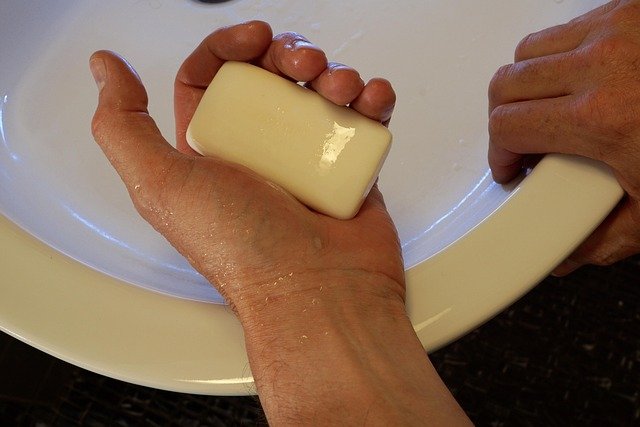
When you walk into a store, you’ll see shelves filled with soaps—bars, liquids, foamy pumps, antibacterial brands, even soaps with fancy scents. It’s easy to wonder: Are some of these better than others? Let’s break it down in simple terms.
Bar Soap
Bar soap is the traditional kind—solid blocks that you rub between your hands. Despite its simple look, bar soap is extremely effective. It creates lather, lifts dirt and germs, and washes them away.
Some people think bar soap is less clean because many hands touch it, but science shows this isn’t a problem. The surface of bar soap doesn’t allow germs to survive for long, and rinsing it under water before use removes any lingering microbes. Bar soap is affordable, lasts a long time, and works very well.
Liquid Soap
Liquid soap has become popular because it’s convenient. It comes in bottles with pumps, and it’s often less messy than bars. Liquid soaps sometimes include moisturizers, which makes them gentler on the skin. This is especially helpful if you wash your hands often, since frequent washing can dry your skin.
In terms of cleaning power, liquid soap is no stronger than bar soap. Both remove dirt and germs equally well—the choice usually comes down to preference and convenience.
Foaming Soap
Foaming soaps are simply liquid soaps mixed with air as they’re pumped out, creating bubbles instantly. Many kids enjoy foaming soap because it feels fun, which encourages them to wash their hands longer. While foaming soap is no more effective than other types, it can make the process more engaging, especially for children.
Antibacterial Soap
Antibacterial soaps contain extra chemicals meant to kill bacteria. At first, they may sound better—but here’s the truth: for everyday use, antibacterial soap is no more effective than regular soap.
Why? Because ordinary soap already removes germs so well that adding extra chemicals doesn’t make much difference. In fact, some experts worry that overusing antibacterial products might contribute to bacteria becoming resistant over time.
That’s why health organizations like the CDC and WHO recommend regular soap—bar or liquid—as the best choice for daily handwashing. Antibacterial soap is only necessary in specific situations, like hospitals.
Scented and Moisturizing Soaps
Some soaps are made with fragrances, colors, or moisturizers like aloe vera or shea butter. These additions don’t affect cleaning power, but they can make soap more enjoyable to use. Moisturizing soaps are especially good for people with sensitive or dry skin, as they prevent irritation from frequent washing.
Which Soap Is Best?
The short answer: any soap works, as long as you use it correctly. Whether it’s bar, liquid, foaming, or moisturizing, what matters most is how you wash—covering all parts of your hands and scrubbing for at least 20 seconds.
So instead of focusing on which soap is “strongest,” focus on building the habit of proper handwashing. That’s where the real power lies.
The Right Way to Wash Hands
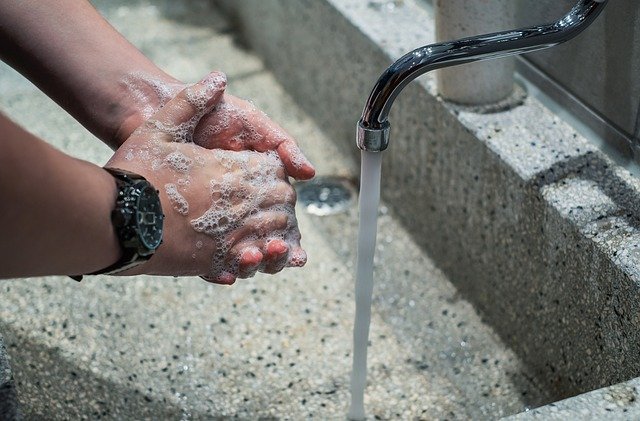
Handwashing may seem like one of the simplest things in the world, but it is also one of the most powerful tools we have to stay healthy. The truth is, many people wash their hands too quickly or skip important parts. Soap can only do its job if we give it enough time and help it reach every corner of our hands. Let’s go through the process in detail.
Step 1: Wet Your Hands Thoroughly
Begin by placing your hands under clean, running water. Warm or cold water both work. Wetting is important because dry skin does not spread soap well. When your skin is damp, soap can spread evenly, making sure every part of your hands gets covered.
Step 2: Apply Enough Soap
Take a good amount of soap—enough to cover your hands completely. If you’re using bar soap, rub it between your palms until a good lather forms. If you’re using liquid or foaming soap, one or two pumps are usually enough. Don’t rush this step—the lather is what helps lift dirt, oil, and germs away from your skin.
Step 3: Scrub Everywhere (The Most Important Part)
This is where most people fall short. A quick rub of the palms is not enough. You need to scrub all surfaces of your hands for at least 20 seconds.
Here’s a simple routine kids and adults can follow:
- Rub your palms together.
- Scrub the backs of your hands.
- Interlace your fingers and clean between them.
- Wrap one hand around your thumb and scrub—then switch.
- Scrub your fingertips against your palm to clean under the nails.
- Don’t forget your wrists.
A fun trick for timing is to sing the “Happy Birthday” song twice or choose another short song or rhyme kids love. This ensures the full 20 seconds are covered without needing a timer.
Step 4: Rinse Properly
Hold your hands under running water and let the soap wash away completely. This is the moment when all the trapped dirt, oils, and germs—caught inside the soap’s micelles—are rinsed down the drain. Take your time and make sure no soap residue is left, especially between the fingers or under the nails.
Step 5: Dry Your Hands
Drying might sound like a small detail, but it’s very important. Germs transfer more easily from wet hands than from dry ones. Use a clean towel, paper towel, or an air dryer. If you’re in a public bathroom, use the paper towel to turn off the faucet and open the door so you don’t pick up germs right after washing.
Why This Method Works
Each step has a role: water prepares the skin, soap lifts the grease and germs, scrubbing gives the soap time to act, rinsing washes everything away, and drying prevents germs from sticking back. Together, these steps turn a simple act into one of the strongest shields against illness.
Making It Fun for Kids
Children often resist washing hands because they see it as boring. That’s where creativity helps. Turn it into a game:
- Pretend their hands are “castles” and the soap is an army chasing out the germs.
- Use fun soaps with colors, scents, or foam to make the task enjoyable.
- Challenge them to create bubbles as big as possible while they scrub.
By making it playful, handwashing stops feeling like a chore and becomes something they look forward to.
The Wider Role of Soap in Everyday Life

Soap isn’t just for washing your hands. Its unique chemistry—the ability to bind to both oil and water—makes it one of the most useful inventions in human history. Once you notice it, you’ll see soap working quietly everywhere, protecting us, keeping things clean, and even saving lives.
Soap in the Home
Think about your kitchen. Dishes after dinner are often coated with greasy oils that water alone cannot remove. Add a drop of dish soap, and suddenly the grease vanishes. That’s because the soap molecules grab onto the oil, break it into tiny droplets, and let water wash them away. Without soap, cleaning plates, pans, and utensils would take hours of scrubbing.
In the bathroom, body wash and shampoos are simply specialized soaps. They not only clean dirt and oils from skin and hair but are often mixed with moisturizers and fragrances to leave you feeling fresh. Even laundry detergents are soaps designed to lift stains from fabric fibers.
Soap in Healthcare
Hospitals rely on soap more than almost anything else. Doctors and nurses wash their hands dozens of times a day to protect patients from infection. In fact, history shows that when doctors first learned the importance of handwashing with soap, death rates from infections dropped dramatically.
Surgical soaps are often specially designed to kill or remove the maximum number of microbes. But even ordinary soap is powerful enough to prevent the spread of most diseases. It’s no exaggeration to say that soap has saved millions of lives simply by keeping germs under control.
Soap in the Environment
Soap also plays a surprising role in the world around us. In some cases, soaps and detergents can cause environmental problems if they aren’t biodegradable, because they can pollute rivers and harm aquatic life. That’s why many companies now make eco-friendly soaps that break down safely and don’t linger in the environment.
On the other hand, soap’s ability to cut through grease makes it incredibly useful for environmental cleanups. For example, when oil spills happen in the ocean, special soap-based solutions are used to help break down the oil so it can be cleaned more easily. Soap doesn’t just keep people safe—it can protect nature, too.
Soap and Society
It’s easy to take soap for granted because it’s everywhere: bars, bottles, foams, and gels. But if you look back through history, access to soap has always meant better health and cleaner living conditions. Public health campaigns in many countries focus heavily on encouraging handwashing with soap because it remains one of the simplest, cheapest, and most effective ways to prevent disease.
In short, soap is not just about personal hygiene—it’s a quiet hero that supports homes, hospitals, schools, and even ecosystems.
How Debsie Helps Kids Learn Through Soap and Science

Before we wrap up, let’s pause and think about this: understanding how soap works is more than just chemistry—it’s a life lesson. Children learn not only why soap cleans dirt and germs but also why small habits, like washing hands, make a big difference. At Debsie, we take everyday wonders like this and turn them into powerful lessons that spark curiosity, build confidence, and make learning unforgettable.
Turning Everyday Things Into Lessons
At Debsie, we believe science is not hidden in labs—it’s everywhere, even in something as ordinary as a bar of soap. When children learn how soap cleans dirt and germs, they aren’t just memorizing facts. They are connecting science to their daily lives. Every handwash becomes a reminder of chemistry in action. This makes learning personal, memorable, and exciting.
Guided Exploration With Expert Teachers
Our teachers don’t just explain that “soap kills germs.” They guide kids step by step—using stories, demonstrations, and simple experiments. For example, they might show how oil stays on water but disappears with a drop of soap. Children get to see the science themselves, ask why it happens, and feel the joy of discovering answers. That active style of learning is what makes Debsie different.
Building Life Skills Beyond Chemistry
Experiments with soap teach more than science. When children wait 20 seconds to wash their hands properly, they are learning patience. When they test different soaps and compare results, they are building problem-solving skills. When they finally explain to their parents why soap is so powerful, they are growing confidence. These life skills—curiosity, focus, resilience—are exactly what Debsie nurtures in every subject, from math to coding to history.
A Global Classroom of Explorers
Debsie students come from many countries, but they share one thing: curiosity. Whether it’s learning why bread rises, why rust forms, or how soap destroys germs, they explore the world together in a safe, supportive online space. Our goal is simple: to help every child see learning not as memorization, but as an adventure.
👉 Want your child to see the world with this kind of curiosity? Book a free trial class at Debsie today and watch how everyday wonders turn into lifelong confidence.
Conclusion – Soap: Small Bubbles, Big Science
Soap may look simple, but its chemistry is extraordinary. A single bar or drop carries the power to grab dirt, break apart grease, and even destroy harmful germs and viruses. With every wash, soap is working silently to protect our health. It’s one of the most effective tools we have, not only for staying clean but also for preventing disease and keeping families safe.
For children, learning how soap works is more than just a science fact—it’s a way of seeing the world differently. Every time they wash their hands, they’re reminded that chemistry is alive in their daily lives. It teaches patience, responsibility, and the importance of small actions that create big results.
At Debsie, this is exactly how we teach. By turning everyday objects into exciting lessons, we help children build curiosity, problem-solving skills, and confidence. Soap is just one example of how science is all around us, waiting to be explored. And with the right guidance, every child can discover that learning is not just useful—it’s magical.
Read Next:
